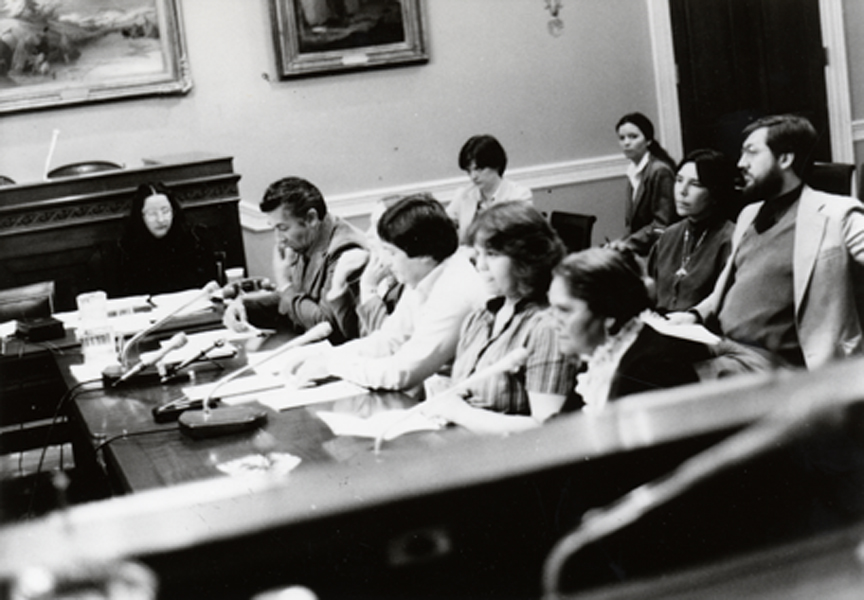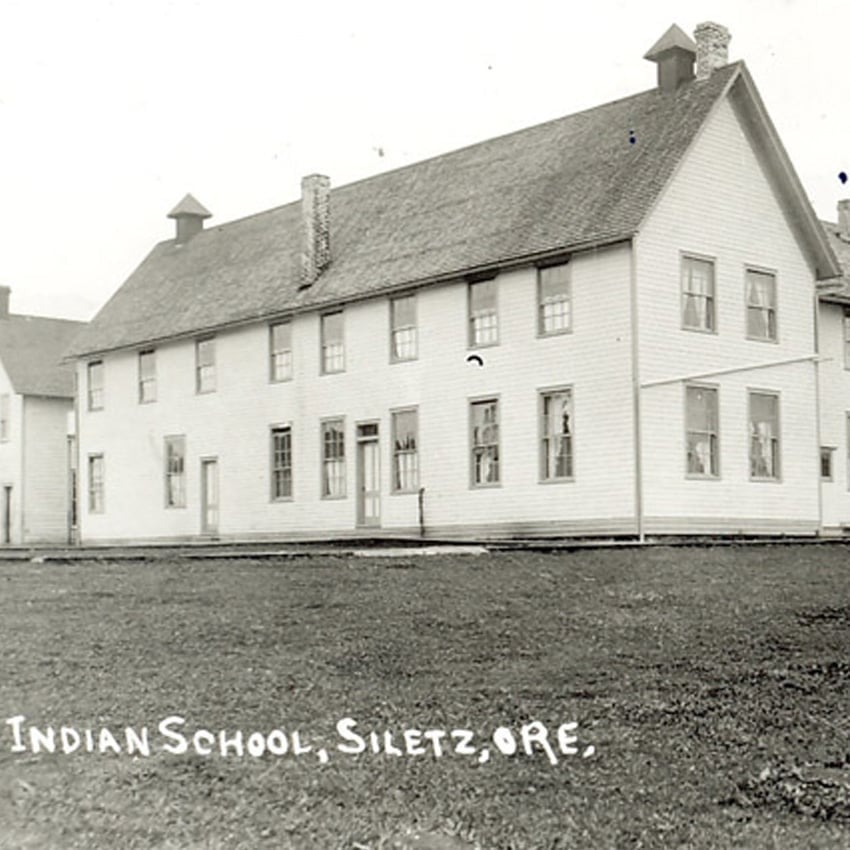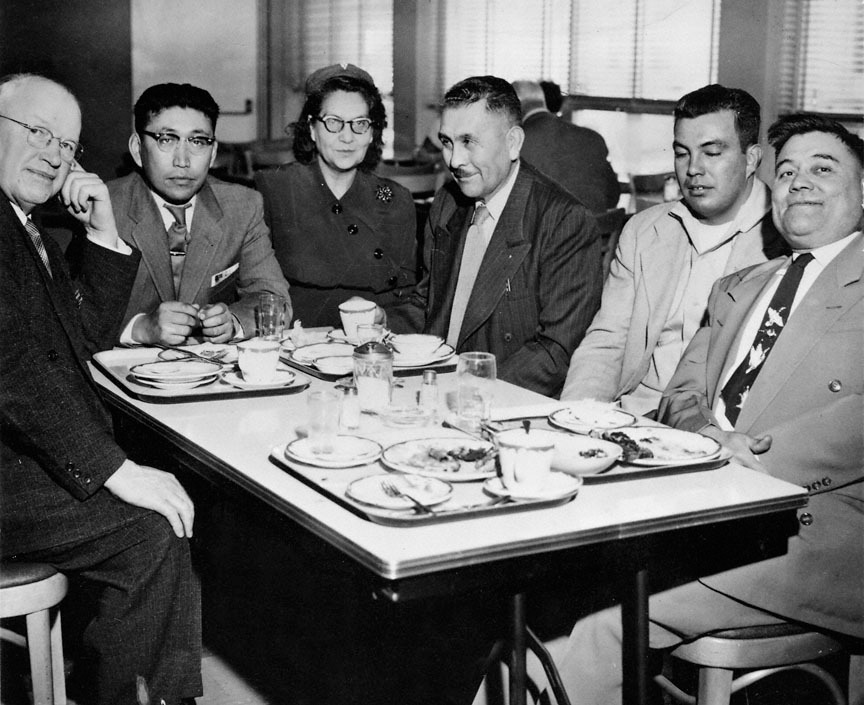In the 1950s, the United States pursued one of the most devastating policies ever enacted against Native Americans, known as termination. This policy ended the federal government’s trust relationship with tribes, bands, and individual Native people who held trust lands or property. The change meant that Native Americans would own their lands without the protective responsibilities guaranteed under 374 treaties ratified between 1778 and 1871. Termination was part of a broader effort to assimilate Native people into mainstream American culture, erasing sovereignty and identity in the process.
The roots of termination trace back to World War II, when over 25,000 Native Americans served in the armed forces. In the postwar years, some government officials believed it was time to free Native Americans from what they saw as U.S. guardianship. During the Cold War, President Dwight D. Eisenhower’s political philosophy and the era’s intense anti-Communism shaped policy decisions. Reservation life and communal cultures were seen as incompatible with conservative democratic values and the drive to protect “American” ways of life. Prejudice against Native people and other minorities also played a role in the push toward assimilation.

In August 1953, Congress passed House Concurrent Resolution 108, declaring that Native Americans should be made subject to the same laws and responsibilities as all other citizens and ending their status as wards of the United States. This effort, led by Senator Henry Jackson of Washington and Senator Arthur Watkins of Utah, had the support of the Bureau of Indian Affairs under Commissioner Glenn Emmons. Bills to withdraw trust status for tribes began to flood Congress, starting with a plan that identified ten tribes as “ready” for termination, including the Klamath of Oregon and the Menominee of Wisconsin. The Menominee were the first to face termination legislation.

Between January 1954 and the end of that decade, Congress considered 288 bills and resolutions on the matter, 46 of which became law. Public Law 588 targeted 2,100 members of sixty bands in western Oregon, including the Siletz, Grand Ronde, Coquille, Coos, Lower Umpqua, and Siuslaw. On August 13, 1954, President Eisenhower signed the bill into law, officially terminating their federal recognition and ending Bureau of Indian Affairs services. Members of the Siletz Tribe received a final per capita payment of $792.50 from the sale of reservation lands.
That same day, Eisenhower signed Public Law 587, ending federal supervision of the Klamath Tribe, the Modoc Tribe, and the Yahooskin Band of Snake Indians. These tribes held valuable timberlands—590,000 acres capable of producing billions of board feet of lumber. The government claimed that distributing per capita payments would make tribal members financially independent. Many Native leaders and advocates, including Oliver LaFarge of the Association on American Indian Affairs, opposed termination, warning that it would harm tribal communities and leave them vulnerable to exploitation.
Economic interests played a powerful role. Non-Native constituents and industries, especially in timber and resource extraction, stood to benefit enormously from the removal of trust protections. Termination nullified treaty rights and left Native property owners exposed to opportunists eager to acquire land and resources. The passage of Public Law 280 in 1953 further eroded sovereignty by granting states criminal and civil jurisdiction over reservations in Oregon (except Warm Springs), California, Nebraska, Minnesota (except Red Lake), and Wisconsin (except Menominee), with Alaska later added.
Termination devastated communities. Many tribal members did not fully understand the legal consequences until it was too late. The Klamath Tribe, in particular, felt betrayed, believing they had been misled about the policy’s impacts. In 1956, tribal representatives traveled to Washington, D.C., seeking amendments to delay or reverse termination. Congress eventually extended the Klamath termination date to August 1961, but by then, damage was inevitable. When lands were appraised at $91 million, each of the 1,659 members received a one-time payment of $44,000. The windfall quickly dissipated for many, while industries profited immensely from the acquisition of timber-rich lands.
For decades, few believed termination could be reversed. Yet the tide began to turn in the 1970s. Menominee leader Ada Deer and the group Determination of Rights and Unity for Menominee Shareholders (DRUMS) successfully lobbied for the Menominee Restoration Act, signed by President Richard Nixon in 1973. The movement gained momentum, and Congress began restoring recognition to tribes across the country.

In Oregon, the Siletz Restoration Act was considered in 1975 with strong backing from Senator Mark Hatfield. Tribal delegations lobbied tirelessly, and in 1977 the Siletz regained federal recognition. President Jimmy Carter signed legislation in 1980 creating a 3,063-acre reservation for the Confederated Tribes of Siletz Indians. The Cow Creek Band of Umpqua regained recognition in 1982, followed by the Confederated Tribes of Grand Ronde in 1983, the Coos, Lower Umpqua, and Siuslaw in 1984, the Klamath in 1986, and the Coquille in 1989. While the Klamath won recognition, they regained only a fraction of their former lands—about 300 scattered acres in Klamath County.
Today, Oregon’s restored tribes remain steadfast in rebuilding their governments, economies, and cultural heritage. They have faced the loss of land, resources, and sovereignty, yet have persisted in reclaiming their rights and protecting their communities. What began as one of the most destructive policies in U.S. history ultimately gave rise to a powerful movement for restoration, resilience, and self-determination.
This article draws upon Termination and Restoration in Oregon by Donald Fixico, published in the Oregon Encyclopedia.













